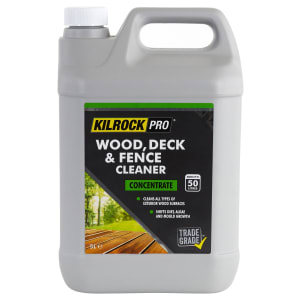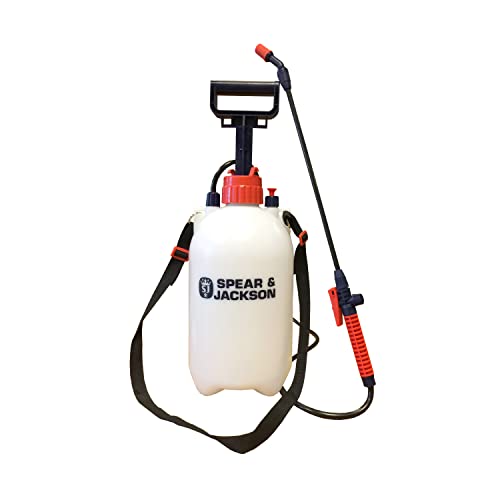How to clean a fence before painting — including the best methods for removing green algae
Cleaning a fence before applying a coat of paint or wood stain is an essential task for maintaining its look and lifespan
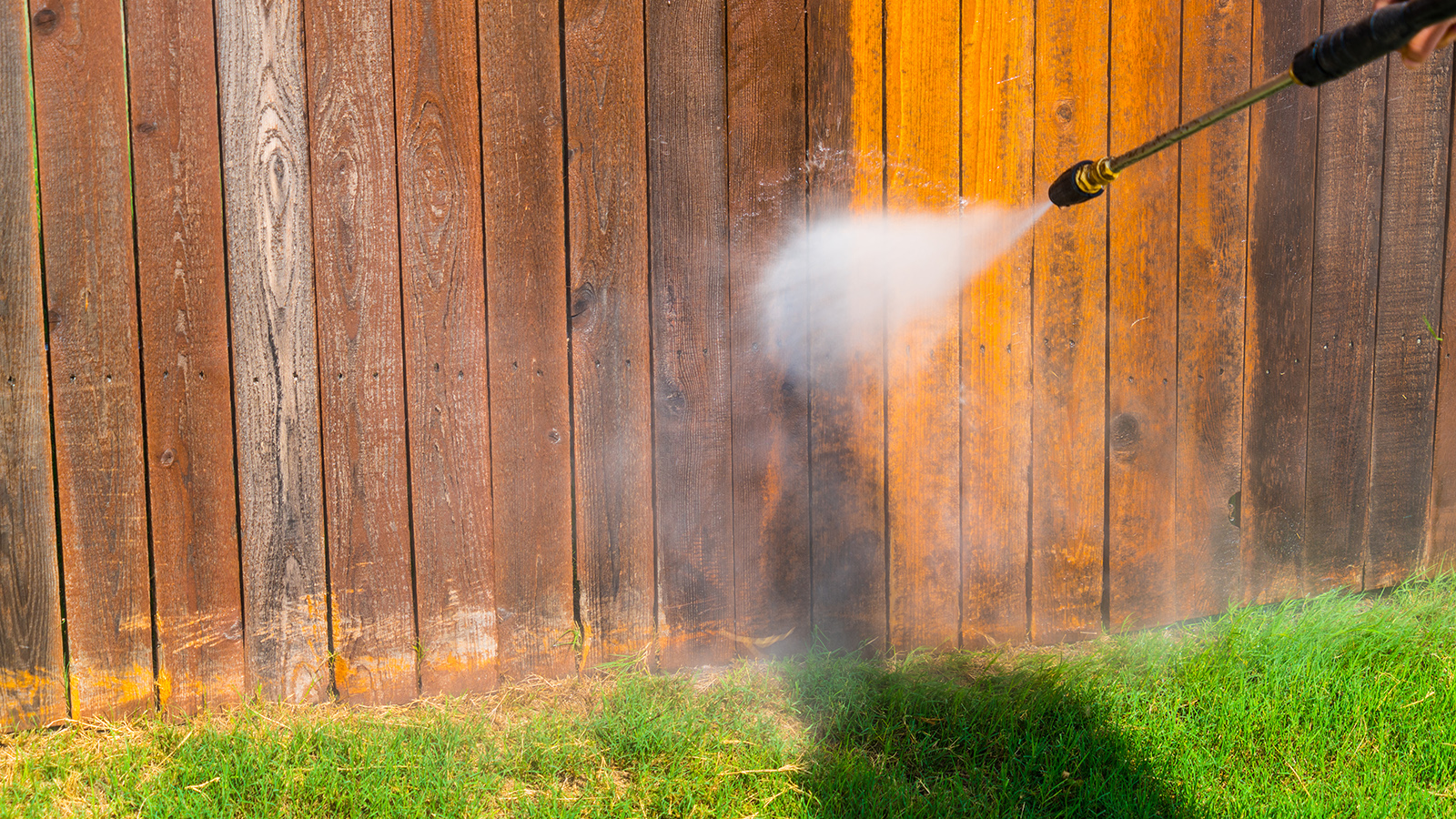
Knowing how to clean a fence before painting is an important first step to preparing the surface for a smooth finish.
Painting a fence is a great way to refresh its appearance but can also extend the life-span by creating a protective layer to the elements. To ensure that protection lasts, removing dirt and mould before application will ensure the paint sticks to the surface.
There are several solutions to achieving a clean finish, depending on the type and condition of your fence, which DIY and paint experts have shared below.
Methods for cleaning a fence
"You need to clean your garden fence thoroughly before painting as otherwise the paint won’t adhere and will probably flake off in the future," says Angela Slater, Gardening Expert at Hayes Garden World.
She outlines the common methods below:
- Using the best pressure washer for the job
- Elbow grease with soap and water
- Algon, algae remover, try 2 x Algon Organic Path and Patio Cleaner Concentrate 2.5l at Amazon.
- A wire brush can be used on a metal fence to remove any algae and flaking paint
- A 50/50 solution of white vinegar and warm water applied with a stiff brush
- Bleach and water applied with a stiff brush. Only use this if your fence is nowhere near any plants and always remember to keep pets and children indoors until the area has been thoroughly rinsed off with clean water.
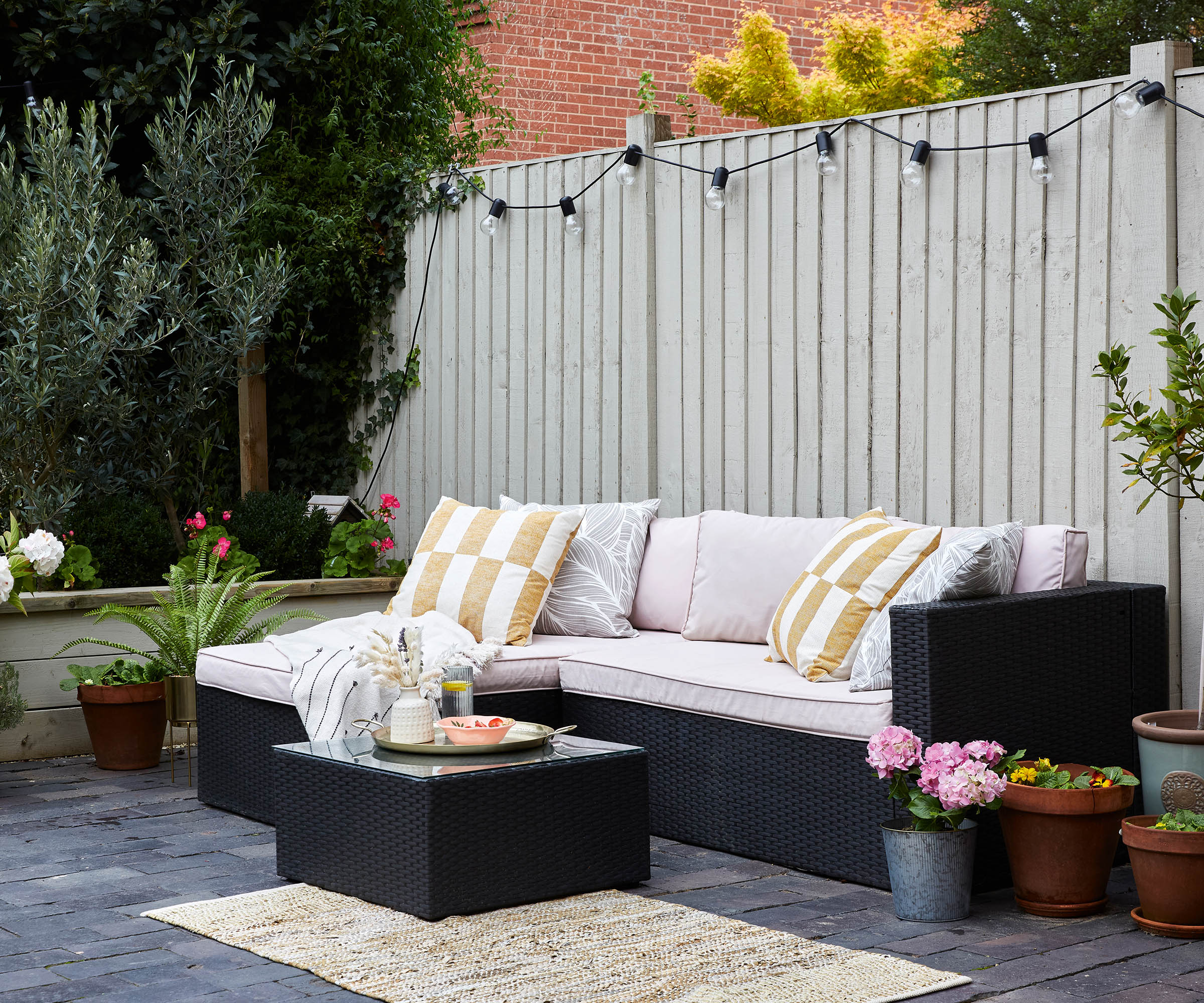

Angela holds a degree in Conservation and Land Management, and has had an active interest in gardening since the age of six. or the past four years, she has been blogging and making video content related to gardening,
How to clean a fence
- Choose a dry day: Dr. Jonathan Kirby, Garden and Cleaning Expert at Roxil recommends waiting for a dry and sunny day to clean your fence. "Washing and treating wooden surfaces fully requires some waiting time to allow your cleaning and treatment products to work effectively on the surface. Choose a sunny day to give your products the best chance of taking effect," he says.
- Remove debris: "Use a stiff wooden brush to brush away any loose debris from the area that you want to treat," says Dr Kirby.
- Clean away dirt: Apply your chosen cleaner or algae remover and follow the instructions on the label. If you're using a pressure washer proceed with a gentle setting at first so as not to damage the wood.
- Replace damaged panels: If you notice that any are rotten or broken panels it's important to replace these fence panels before you begin to paint. For smaller areas use a wood filler
- Leave to dry: Wait until your fence is fully dry before applying any fence paint.
Shop fence cleaning solutions
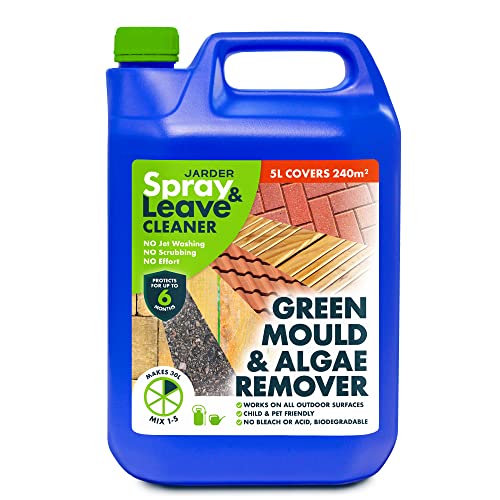
This can be used on fencing and decking. You simply spray and leave it on and it works without scrubbing to remove mould. It's meant to be safe for children at pets as it's non-caustic and contains no bleach.

Dr. Jonathan Kirby is a developmental chemist and Garden and Cleaning Expert at Roxil. From landscaping to masonry protection, he has dedicated himself to helping protect UK housing stock through the development of new and innovative materials.
Best way to clean a wooden fence
“When cleaning a wooden fence, especially a painted one, it's crucial to choose the right cleaner," begins Simon Wardle, fencing and DIY expert and the owner of Armstrong Cheshire.
“The best way to clean this type of fence is by using a pressure washer. It's incredibly effective at removing dirt, grime, mildew, and other build-up without damaging the wood itself. Pressure washing not only gets the job done quickly and thoroughly but also contributes to a longer lifespan for your fence, saving you on any future fence repair costs.”
"A bleach-free solution like Wet and Forget is ideal for stopping green mould from your fence. It's tough on mould and algae but gentle on the paint, ensuring your fence stays looking its best,” finishes Simon.
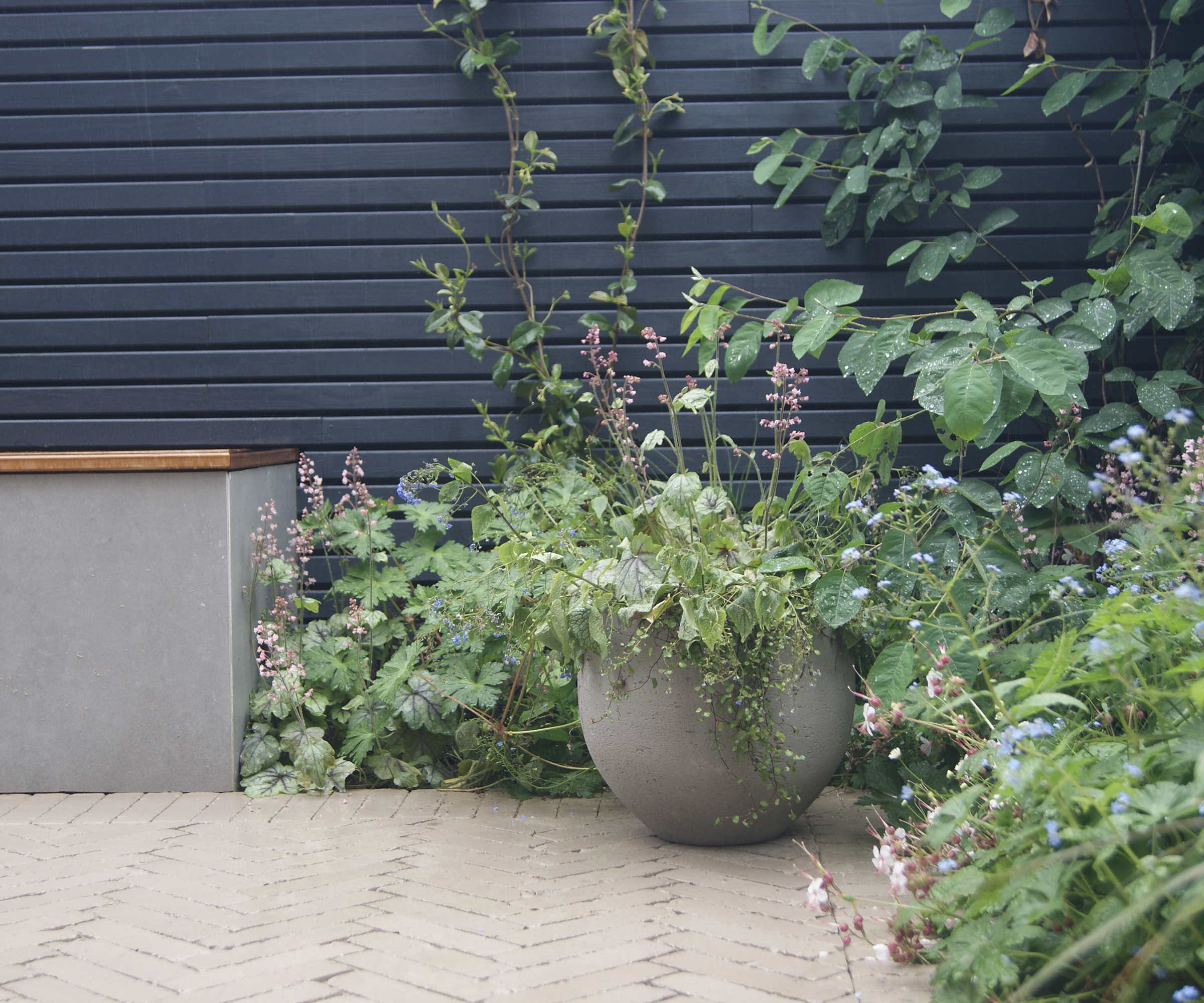

Simon is the owner of Armstrong Cheshire, an online timber, patio and building materials supplier.
Cleaning a fence with a pressure washer
"A pressure washer is usually my go-to because it gets the job done quickly, but just be careful if you opt to use one because it can damage the wood, especially if your fence is old," says Thomas Oldham, Co-Founder, of UK Construction Blog.
"Start with a gentler spray and adjust as needed. Pressure washers are fantastic for stubborn grime, but you need to use them with care."
You can clean a fence Angela Slater adds that your fence needs to be very secure, otherwise, the pressure could knock it over. "Bear in mind this is only suitable for a solid fence to ensure that the water doesn’t go over into your neighbour's garden and damage plants."
Composite fences will also require a gentler touch which is outlined in more detail below.
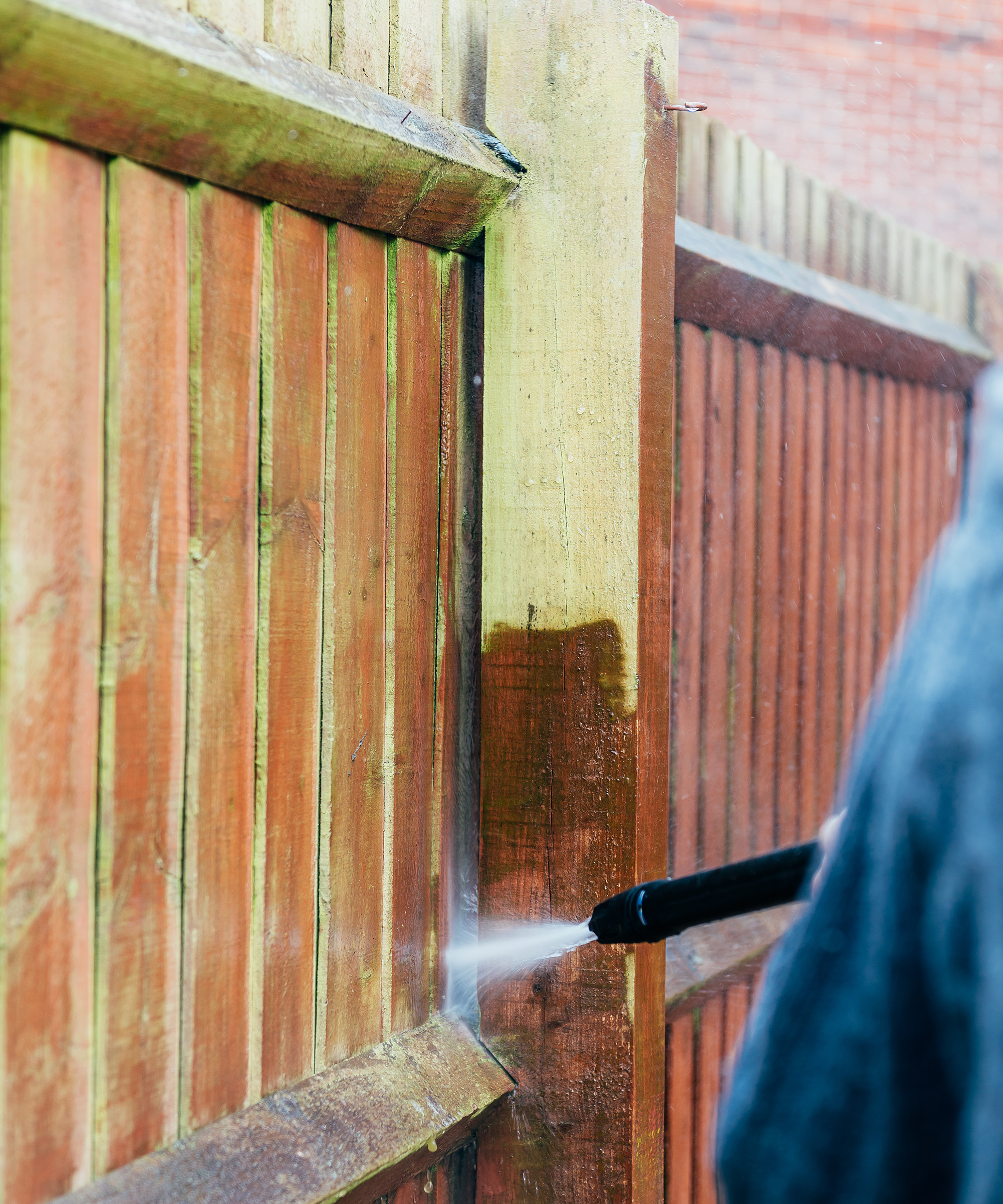

Thomas Oldham has spent the past four years using his expertise of working in the engineering and construction industry for over a decade to develop the UK Construction Blog - a leading online platform dedicated to empowering individuals and businesses in the construction industry.
How to clean a composite fence
“When cleaning a composite fence, gentleness is key. A mild detergent and water, combined with a soft brush or cloth are usually all you need to remove dirt and grime, making sure to rinse well after applying soap," says Simon Wardle.
"For more stubborn dirt a light jet wash can be helpful, but avoid high pressure that could damage the material."
Bear in mind that the nature of composite fences is that they won't need to be painted, so a simple cleaning is all the maintenance that's needed.
FAQs
How to get green off fence before painting?
A few seasons after you put up a fence you may notice green patches begin to appear. These are caused by algae growth and it's key to remove this before applying paint to your fence. Pressure washing alone won't be effective at removing the spores which cause the algae.
Angela Slater, Gardening Expert at Hayes Garden World outlines the common methods below:
- Algon is one of the quickest and easiest ways to clean algae off a wooden fence. Choose a warm calm day and spray the fence with the correct solution then just wait until it removes the algae. Any remaining algae can be brushed off with a wire brush. It will scorch foliage if it makes contact so it's not suitable if there are plants right against the fence.
- If you don’t like the thought of the Algon getting onto your plants you can use a 50/50 solution of white vinegar and warm water applied with a stiff brush. Rinse off thoroughly with clean water.
- Bleach and water applied with a stiff brush will remove the algae but only use if the fence is nowhere near your plants. Rinse off with clean water and make sure it goes straight down the drain. Make sure pets and children are kept away until the area has been thoroughly rinsed with clean water.
Cleaning a fence and giving it a fresh coat of paint is just one way to breathe new life into your garden. But paint is just one way to cover a fence. Have a look at more idea in our article on how to cover a boring fence.
Get the Homebuilding & Renovating Newsletter
Bring your dream home to life with expert advice, how to guides and design inspiration. Sign up for our newsletter and get two free tickets to a Homebuilding & Renovating Show near you.

Teresa was part of a team that launched Easy Gardens in 2018 and worked as the Editor on this magazine. She has extensive experience writing and editing content on gardens and landscaping on brands such as Homes & Gardens, Country Homes & Interiors and Living Etc magazine. She has developed close working relationships with top landscape architects and leading industry experts, and has been exposed to an array of rich content and expertise.
In 2020 Teresa bought her first home. She and her partner worked alongside architects and builders to transform the downstairs area of her two bedroom Victorian house in north London into a usable space for her family. Along the way she learned the stresses, woes and joys of home renovation, and is now looking to her next project, landscaping the back garden.
